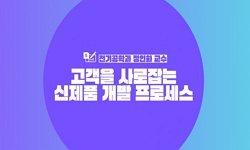본 연구는 패션 산업 내에서 발생하는 폐기물을 재활용하는 신제품 개발을 서비스디자인 프로세스의 개념 으로 체계화함으로써 패션 산업의 폐쇄루프 시스템을 제시하는 데에 목적이 있다....
http://chineseinput.net/에서 pinyin(병음)방식으로 중국어를 변환할 수 있습니다.
변환된 중국어를 복사하여 사용하시면 됩니다.
- 中文 을 입력하시려면 zhongwen을 입력하시고 space를누르시면됩니다.
- 北京 을 입력하시려면 beijing을 입력하시고 space를 누르시면 됩니다.
https://www.riss.kr/link?id=A109521710
- 저자
- 발행기관
- 학술지명
- 권호사항
-
발행연도
2024
-
작성언어
Korean
- 주제어
-
KDC
592
-
등재정보
KCI등재
-
자료형태
학술저널
-
수록면
77-90(14쪽)
- 제공처
-
0
상세조회 -
0
다운로드
부가정보
국문 초록 (Abstract)
본 연구는 패션 산업 내에서 발생하는 폐기물을 재활용하는 신제품 개발을 서비스디자인 프로세스의 개념 으로 체계화함으로써 패션 산업의 폐쇄루프 시스템을 제시하는 데에 목적이 있다. 이를 통해 글로벌 패션시 스템에서 필수 불가결한 개념으로 떠오른 순환 패션의 학문적 이론과 실제의 격차를 줄이고, 섬유패션 기업 의 리사이클 신제품 개발 역량과 패션 산업 공급망의 순환성과 지속가능성 강화에 기여하고자 하였다. 이론 적 배경으로 폐쇄루프 시스템을 포함한 순환 패션과 서비스디자인 프로세스에 대해 알아보고, 선행연구를 고찰하였다. 연구 방법은 참여관찰로 서비스디자인 프로세스인 “발견하기”, “해석하기”, “개발하기”, “전달하 기”에 따라 지속 가능한 패션 기업인 ㈜페어트레이드코리아를 대상으로 사례연구를 진행하였다. 연구 결과, 폐쇄루프 시스템 도입 시 소비자의 지속가능성 인식 및 신뢰를 높이기 위해 명확한 정보 제공과 감성적 커뮤 니케이션이 중요하며, 소비자들이 리사이클 패션 아이템으로 잡화를 선호하는 경향이 있음을 확인하였다. 패션 산업 내에 폐기물 중 생산과정에서 버려지는 양모 자투리 원단, 폐실, 편직 부산물 수거한 후, 섬유화하 여 리사이클 원사를 개발하고, 이를 편직한 신제품을 개발하였다. 서비스디자인 프로세스를 통해 고객 페르 소나와 고객 여정 지도를 기반으로 맞춤형 제품 및 서비스 개발이 고객 경험 극대화와 브랜드 가치 강화, 기업의 신제품 개발 역량 강화에 중요한 역할을 할 수 있음을 확인할 수 있었다. 본 연구 결과는 국내 패션 산업이 의류 폐기물 감소에 긍정적으로 기여할 수 있는 방법을 제시하고, 국내 로컬 기반의 밸류체인 구축으 로 지속 가능한 자원순환과 상생의 가치를 구현하고, 서비스디자인을 결합하여 신제품 개발 프로세스의 적정 성을 통한 기업의 경쟁 우위를 이끄는 데 도움이 될 것으로 기대된다. 본 연구는 특정 기업을 사례로 한 연구 이므로 일반화에 한계가 있을 수 있으며, 폐쇄루프 시스템의 정착을 위해서는 정책적, 사회적 지원도 함께 이루어져야 할 것이다.
다국어 초록 (Multilingual Abstract)
The purpose of this study was to present a closed-loop system for the fashion industry by systematizing the development of new products that recycle waste generated within the fashion industry using the concept of a service design process. It aimed to...
The purpose of this study was to present a closed-loop system for the fashion industry by systematizing the development of new products that recycle waste generated within the fashion industry using the concept of a service design process. It aimed to bridge the gap between academic theories and practical applications of circular fashion. Additionally, this study sought to contribute to enhancing the recycled new product development capabilities of textile and fashion companies and improving the circularity and sustainability of the fashion supply chain. Literature regarding circular fashion including the closed-loop system and the service design process was reviewed. The research method was participant observation, and a case study was conducted for FairTradeKorea Co. Ltd., a sustainable fashion company, following the service design process of “discover,” “define,” “develop,” and “deliver”. The research findings showed that when implementing a closed-loop system, clear information and emotional communication are crucial to enhancing consumer trust and perception of sustainability. Consumers tend to prefer recycled fashion items such as accessories and small goods. After collecting leftover wool fabric, waste yarn, and knitting byproducts discarded during the production process, they were fiberized to develop recycled yarn, and then new knit products were developed. The service design process demonstrated that customized products and services based on customer personas and customer journey maps can significantly enhance customer experience, brand value, and a company's new product development capabilities. The results of this study suggested the ways in which the domestic fashion industry can positively contribute to reducing clothing waste, implement sustainable resource circulation and promote the value of coexistence by establishing a domestic, local-based value chain. Integrating service design into the new product development process can help companies gain a competitive advantage by optimizing the process’s suitability.
목차 (Table of Contents)
- 요약
- Ⅰ. 서론
- Ⅱ. 이론적 배경
- 1. 순환 패션과 폐쇄루프 시스템
- 2. 서비스디자인 프로세스
- 요약
- Ⅰ. 서론
- Ⅱ. 이론적 배경
- 1. 순환 패션과 폐쇄루프 시스템
- 2. 서비스디자인 프로세스
- Ⅲ. 연구 방법
- Ⅳ. 결과
- 1. 발견하기
- 2. 해석하기
- 3. 개발하기
- 4. 전달하기
- Ⅴ. 결론
- References
- Abstract
동일학술지(권/호) 다른 논문
-
유튜브에 나타난 빈티지 패션 콘텐츠의 유형별 특성과 소비자의 추구가치
- 한국패션디자인학회
- 박세림
- 2024
- KCI등재
-
현대 설치 미술에서 패션 오브제의 특성과 의미 - 루시 오르타, 서도호, 아이 웨이웨이의 작품을 중심으로 -
- 한국패션디자인학회
- 고예지
- 2024
- KCI등재
-
- 한국패션디자인학회
- 강호림
- 2024
- KCI등재
-
- 한국패션디자인학회
- 장일낙
- 2024
- KCI등재





 eArticle
eArticle





